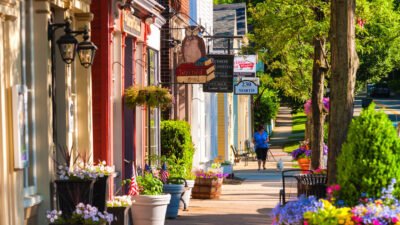As luxury real estate undergoes a profound transformation, a new paradigm is emerging—one in which sustainability and sophistication are intricately woven together. Environmentally conscious design and resource-efficient features are quickly becoming staples of elite residences. Affluent buyers are not just seeking premium locations and exquisite finishes, but also expect a steadfast commitment to green living and long-term value. Across leading markets, including Sarasota luxury real estate, these trends are reshaping what it means to live lavishly while reducing one’s ecological footprint.
Today’s high-net-worth homeowners recognize that true luxury is not defined solely by indulgence, but also by stewardship—toward the environment, personal wellness, and community. This growing movement is pushing architects and developers to innovate at every step. The result is a new generation of homes that seamlessly blend opulence with ecological responsibility, boasting features that are both functional and beautiful.
In this article, we’ll explore the most significant sustainable trends in modern luxury real estate, examining how eco-conscious materials, smart technologies, and health-centric amenities are becoming the gold standard for sophisticated living. Whether investing in a waterfront mansion or a downtown penthouse, buyers are seeking properties that promise both exclusivity and sustainability.
From net-zero energy estates to biophilic design, these innovations are transforming not just the appearance and ambiance of luxury homes, but also their connection to the environment—and to one another.
Net-Zero Energy Homes
At the forefront of this sustainability shift are net-zero energy homes—properties thoughtfully engineered to generate as much clean energy as they consume. This is typically accomplished through the use of solar panels, geothermal heat pumps, advanced battery storage, and highly efficient insulation systems. These features not only cut greenhouse gas emissions but also offer luxury buyers significant savings on utility bills and future-proof their investments against rising energy costs.
According to the International Energy Agency, net-zero homes can reduce household emissions by more than 80% compared to conventional homes. For discerning buyers, this remarkable reduction means contributing to climate action without forgoing the amenities and quality associated with luxury living.
Eco-Friendly Building Materials
Today’s luxury residences increasingly feature sustainable materials such as reclaimed hardwoods, bamboo flooring, recycled metal accents, and low-VOC (Volatile Organic Compound) paints. Green innovations, such as terrazzo flooring made from recycled glass, deliver timeless beauty and durability while minimizing resource extraction. Builders are also adopting insulation and cladding solutions composed of natural fibers and nontoxic substances—steps that support healthier indoor air quality and reduce overall ecological impact.
With eco-friendly materials, luxury homes become unique showcases of craftsmanship and environmental stewardship, appealing to buyers who value both ethics and aesthetics. In fact, according to Architectural Digest, the use of reclaimed and sustainable finishes adds distinctiveness and provenance to upscale properties.
Smart Home Technology
The integration of smart home systems is no longer just a bonus but has become a central characteristic of modern luxury estates. Advanced controls enable residents to manage lighting, HVAC, shading, and irrigation remotely, optimizing energy demand in real-time. AI-driven security surveillance and biometric entry systems provide peace of mind and bespoke convenience. These technologies help reduce energy consumption, support daily routines, and preserve the property’s value over time.
A home that learns, adapts, and responds to occupant behavior isn’t just comfortable—it’s sustainable, blending technological luxury with real environmental benefits.
Water Conservation Strategies
High-end properties are leveraging progressive water management strategies, from smart irrigation that minimizes waste to rainwater harvesting systems that supplement landscape watering and outdoor amenities. Greywater recycling, another notable feature, treats used water from sinks and showers for reuse in toilets and gardens.
These innovations are particularly vital in regions facing water scarcity or seasonal drought, supporting not just the property but also the broader community through reduced demand on municipal supplies. Savvy investors and homeowners are prioritizing these solutions, recognizing that resource conservation is integral to a luxurious lifestyle.
Biophilic Design
Biophilic design—a methodology that connects residents with the natural environment—has become a signature feature of contemporary luxury homes. Luxurious green walls, expansive gardens, water features, and panoramic windows that frame natural vistas help bring the outdoors in and elevate overall well-being.
Research has shown that biophilic elements enhance air quality, regulate thermal comfort, and reduce energy consumption while promoting occupant mental and physical well-being. For luxury buyers, this means serene environments that amplify both wellness and property value.
Wellness-Centric Amenities
More than ever, high-value residences now come with amenities that support a holistic lifestyle. Think bespoke yoga studios, personal fitness chambers, spa-inspired bathrooms, saltwater pools, meditation gardens, and whole-house air and water purification systems. These features enhance quality of life, especially for those who prioritize health, relaxation, and mindfulness at home.
As reported by Forbes, the definition of a dream home now extends well beyond entertainment and aesthetics to include physical and mental wellness.
Community and Lifestyle Focus
Today’s sustainable luxury developments focus on fostering genuine lifestyle communities. Integrated neighborhoods blend residential, retail, and recreational spaces, reducing commutes while enhancing connectivity and social well-being. Shared green amenities—such as community gardens, walking trails, wellness centers, and cultural hubs—cater to residents’ desires for both privacy and interaction.
These “15-minute communities” support a lower-carbon, more vibrant way of life, ensuring that buyers enjoy the convenience of urban living within environmentally responsible frameworks.
Conclusion
Sustainability has redefined luxury real estate, making eco-conscious features, wellness amenities, and advanced technologies non-negotiable benchmarks for exclusive living. As high-end buyers seek properties that promote personal well-being and reflect a commitment to global stewardship, the demand for innovation and responsibility will continue to grow.
The transition to sustainable luxury is not just a trend—it’s the new template for modern living, where indulgence and integrity coexist, benefiting both homeowners and the planet alike.



